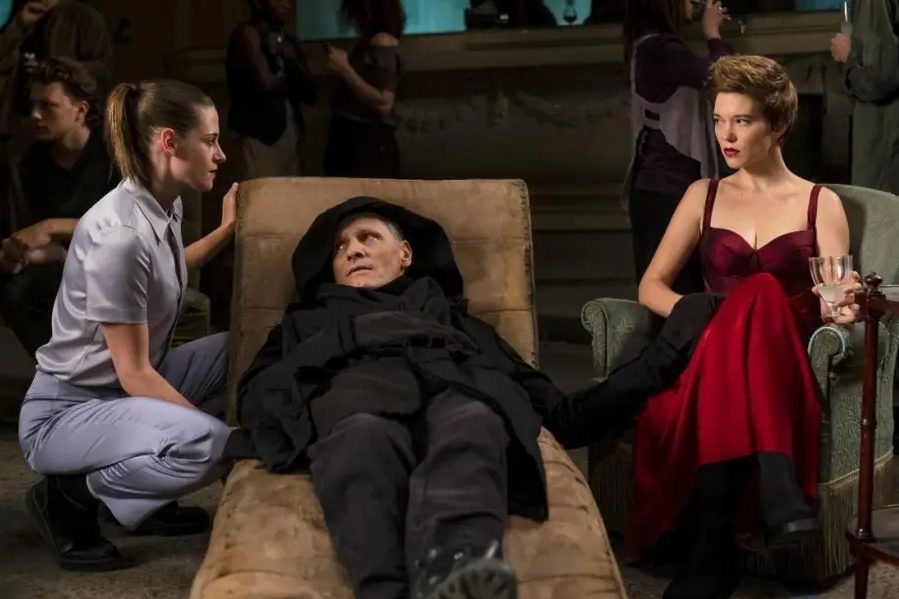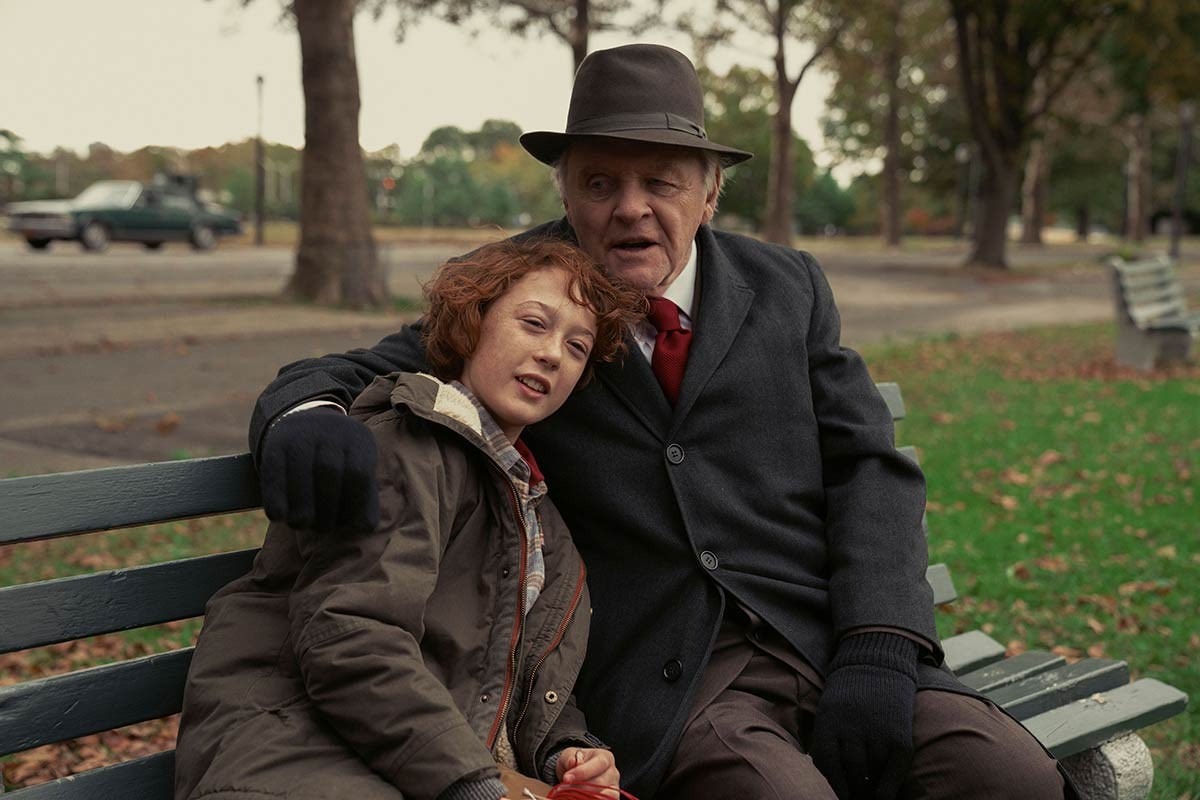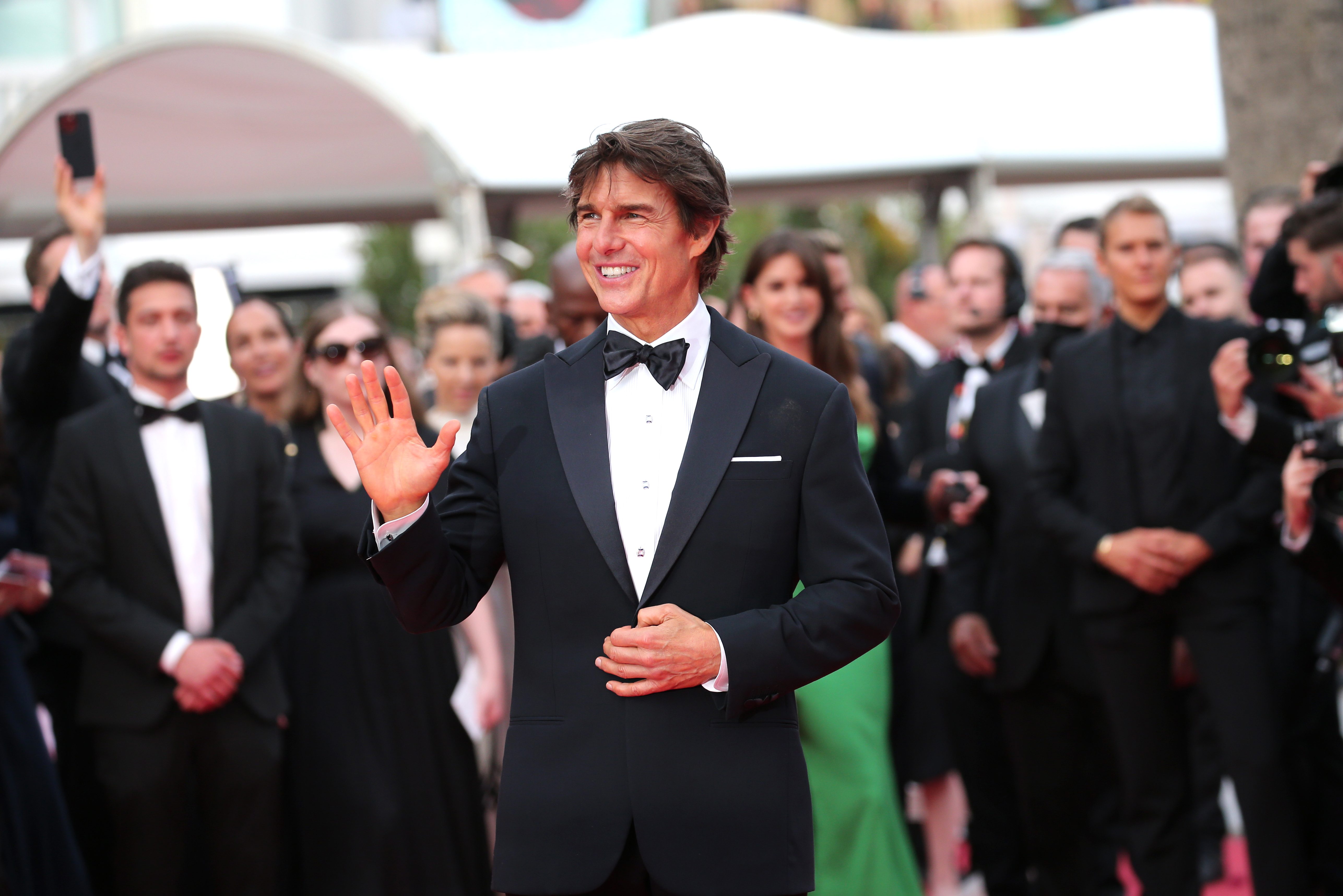This is the latest installment of the 2022 edition of the French Dispatches, our on-the-ground coverage of the Cannes Film Festival. Watch this space over the next fortnight for more from the 75th edition.
David Cronenberg rolled up on the Cannes red carpet last night in white Oakleys to present Crimes of the Future, finally a gnarly and dense movie worth chewing over at what’s been to date a pretty disappointing Cannes. Everyone gets respectable if they last long enough: at Cronenberg’s first Cannes, in 1996, he was booed upon accepting a jury award created just for him and his divisive film, over the vociferous objections from a number of jurors including, Cronenberg has said, president Francis Ford Coppola. But he’s been back several times since, been the jury president, and was the spiritual father of last year’s Palme d’Or winner Titane, so Crimes of the Future had a sense of homecoming, the master of body horror returning to both a festival and a genre to which he’s made legendary contributions, with a film that plays the hits, suturing together dug-up old bits from films like The Brood and Videodrome and The Fly and Dead Ringers and eXistenZ and jolting them back to life.
In the future, the human body is in rebellion, developing in ways that are less evolution than “insurrection”: no longer feeling pain and spontaneously forming “neo-organs” of unclear purpose. In this zeitgeist, Saul Tenser (Viggo Mortensen, eyebrowless) and the lovely Caprice (Léa Seydoux), his creative and personal partner, are performance artists. Saul’s art, you might say, comes from a place deep inside of him: he grows neo-organs, a metaphor for the subconscious genesis of new ideas, and at their performances Caprice extracts them, a domme to the naked man making agonized, ecstatic faces from within an old “Sark unit” — a modified biomorphic autopsy machine that looks like if Operation was made by H.R. Giger instead of Hasbro.
Saul and Caprice are body artists, a label often slapped onto Cronenberg himself; they attract fervent fans. “Surgery is the new sex,” says Kristin Stewart, breathless as a groupie. She plays a character named “Timlin,” partner to “Whippet” (Cronenberg gives his characters the best names) at the seemingly open-all-hours Organ Registration Bureau, part of a shadowy bureaucracy monitoring the anarchic new shiftings of the human form, with accompanying subversive intrigues and assassinations. It is rumored that a radical cell is attempting to bioengineer the human body to eat plastic and other industrial waste. (David Cronenberg, who’s been warning us about human bodies hybridizing with alien forms since the 1980s, is the definitive auteur of the Microplastics Era.)
The pleasures here are plentiful. “BODY IS REALITY” proclaims a video installation at one body-art performance; the gore effects here sometimes betray the filmmakers’ finite means, but there are many viscous, lumpen Cow Tools–shaped viscera and appliances. Cronenberg’s script is heavy on exposition and double entendre, teasing allegorical readings relating to penetration of all kinds, gender identity, fetish, body modification and plastic surgery, bitchy art scene rivalries and climate change. Viggo, dressed like a ninja for some reason, skulks around the movie hocking and wheezing like a three-pack-a-day smoker as he suffers from organ-growing pains and sits in a semi-sentient LifeFormWare breakfast chair shaped like a giant mandible that manipulates his body to help him digest his food easier. For me the film is funnier than it is smart, smarter than it is sexy, and sexier than it is gory, though the humor, intelligence, sex and gore all come from the same place of playfulness. This is what’s known as Late Style: Cronenberg, who turned 79 in March, has a rich catalogue raisonné — or what Saul Tenser would call an “organography” — to recombine.
The film was shot in Greece, for financing reasons, and the locations, chipping cement walls and rusted-out shipyards and underground performance galleries, give a sense less of an old warehouse district on the cusp of gentrification than general analog decrepitude, a decaying social fabric propping up the expensive new tools that are the only things that work properly. (The future also seems to take place all in a single offseason beach town. When the film ends, after an hour and 45 minutes, one colleague joked, it’s either because the money ran out or the tourist season started and all the locations went back on Airbnb.) The cast is international, giving the film a placeless ersatz airport-lounge feel; performances in Cronenberg’s films are often deliberately cool and stiff, almost animatronic, and the posthuman sleekness of his affect pairs interestingly with Saul and Caprice’s many comments on the economics and pressures of making art. It seems that Cronenberg is as personally curious about cinema’s evolution in a world dominated by ominous tech and social decay as the body’s evolution.
I said earlier that this has been a disappointing Cannes, without very many films really landing, particularly big titles. Partly it’s that any festival lineup would suffer in comparison to last year’s buffet, which had two years’ worth of titles to look over following the cancellation of 2020; partly it’s that we’re finally experiencing the consequences of the pandemic supply-chain shock; and partly it’s that a couple of big names haven’t lived up to expectations.
I was planning on pairing Crimes of the Future with Monday’s other big Competition title Decision to Leave, by the Korean director Park Chan-wook — a Cannes regular since 2004, when Quentin Tarantino’s jury gave Oldboy the Grand Prix, and last here in 2016 with The Handmaiden — but I find I don’t have much to say about it. Detective Hae-joon (Park Hae-il) investigates a man’s fatal fall from the top of a mountain. Maybe it was suicide, maybe murder; he suspects the widow, Seo-rae (Tang Wei), even as he falls for her. Park’s favorite film, Hitchcock’s Vertigo, is at the spine of this one, and its narrative structured out of reversals, role-playing and romantic tragedy, but all his clever directorial flourishes (I liked how he manipulates focus when Hae-joon interrogates Seo-rae in front of a one-way mirror) and screenplay full of musical repetitions don’t deepen the material. Still, it’s the first film in competition to crack three stars on the Screen international critics grid, though, so what do I know? And Tang Wei is excellent in the femme fatale role, earthy and vulnerable in the quicksilver way the archetype requires, and would be a deserving Best Actress winner here.
But there is one movie I’m eager to pair with Cronenberg, in the Directors’ Fortnight selection. It’s even more visceral and thought-provoking than Crimes of the Future — it is, literally, far more than skin-deep. De Humani Corporis Fabrica, a documentary by Verena Paravel and Lucien Castaing-Taylor, is comprised largely of footage of invasive surgeries, both endoscopic views from deep inside the intestines and of a prostatectomy, and cinema-vérité–style footage of procedures including, I believe, the pneumatic lithotripsy of a ureteral stone (do not look this up), an intraocular lens implant and a harrowing emergency C-section. (I don’t think you’ll mind a spoiler this time: Baby and mother are both fine.)
If you can stomach it — and a lot of people couldn’t — De Humani is a deeply moving meditation on the corporeal fact of the human body, its vulnerability and complexity and the miracle of modern medicine. At at the same time, Paravel and Castaing-Taylor capture glimpses of hospital admin and the leisure life of doctors; listening to the surgeons’ gallows humor, small-talk about their real-estate investments, complaints about hospital budgets and administration and panic as surgeries go wrong is a bracing insight into the human and structural factors at whose disposal our bodies are. Seeing glimpses of elderly or mentally disabled inpatients wandering the wards is a reminder of the inexorability of decline.
In Crimes of the Future, Caprice notes that the word “autopsy” comes from the Greek for, roughly, the act of seeing with one’s own eyes. The Act of Seeing with One’s Own Eyes is also the title of a landmark 1971 short by the experimental filmmaker Stan Brakhage, consisting of footage of autopsies conducted at a Pittsburgh morgue, which is as frank a confrontation with the separateness of soul and body as I ever hope to see, and certainly will never again. In the midst of life, we are in death — even here at Cannes!
This article appeared in an InsideHook newsletter. Sign up for free to get more on travel, wellness, style, drinking, and culture.
























